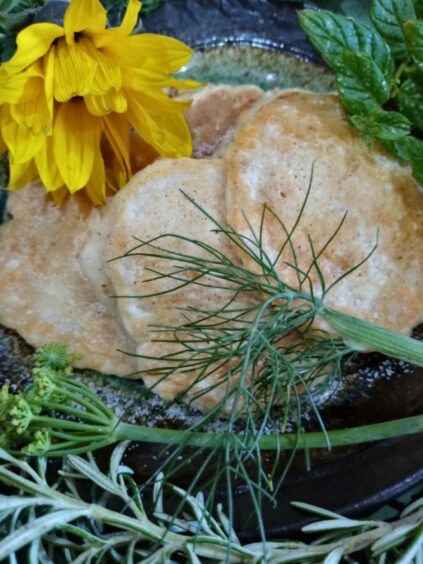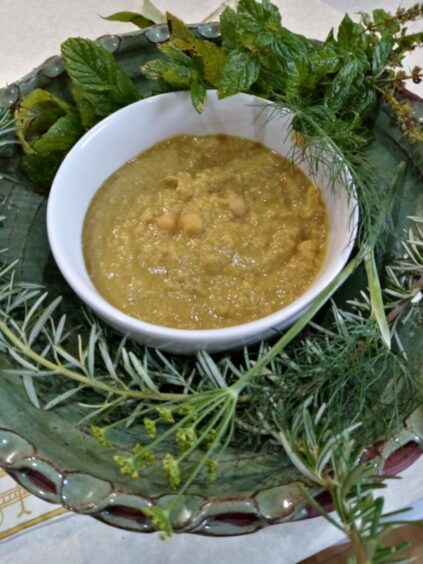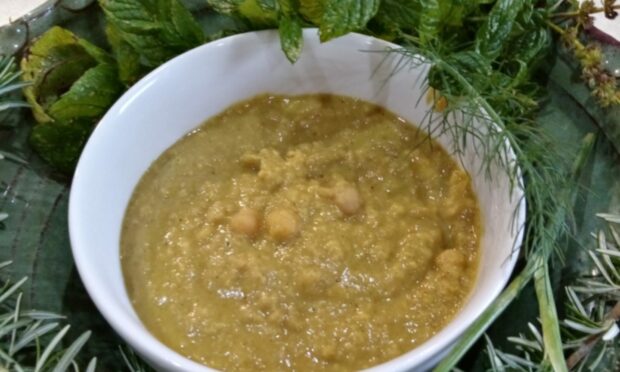Medieval lords and ladies dined at incredible banquets where armies of cooks prepared and served dishes like roast larks, boars head, spiced pudding of pork, quince puddings – some even gilded with gold leaf!
Most people ate with their hands, bringing their own knives and spoons and no one had a fridge.
In villages a communal cook shop sold pies, meat and puddings.
For a small fee you could cook food in their oven because the majority of working people had no proper kitchen. They mostly ate thin broths and porridges.
Water in general was not for drinking, the alternatives were soor dook (buttermilk), weak beer or watery wine.
Everyone liked bread. White bread (paindemain) for the rich, others ate breads of wheat, barley, oats and rye. Such breads today are handmade and expensive.
Here are two recipes to create dishes that were similar to what they ate back in the medieval times, which you can try at home.
Make sure to ask an adult for help with the trickier sections.
Hot carrot, parsnip and apple fritters
Makes 12-14 fritters

Ingredients
- 1 large parsnip, peeled and chopped
- 1 carrot, peeled and chopped
- 1 cooking apple, peeled and chopped
For the batter:
- 225g plain flour
- 2 large eggs
- 1 bottle sparkling apple juice or alcohol free beer
- 1 tsp pokerounce spice (see below)
- Pinch of sea salt
- 1 tbsp vegetable oil
For the pokerounce spice:
- 1 dessertspoon ground black pepper
- 1 dessertspoon cinnamon
- 1 dessertspoon ginger
Method
- First, cook the parsnip, carrot and apple in salted water until tender.
- Drain and mash them together.
To make the pokerounce spice:
- Mix the spices together and store in an airtight container until needed.
- Any leftover can be used to make delicious gingerbreads, fruit cake and ice cream.
To make the batter:
- Make a thick batter with the flour, eggs and apple juice or beer, then fold in the vegetables adding more liquid to make a consistency like thick double cream.
- Season with salt and stir in the spice mix.
- Heat the oil in a frying pan over a medium heat.
- Drop in tablespoons of batter to cook on both sides till golden, drain on paper towel.
- Serve sprinkled with sea salt.
Spiced chickpeas
Serves 4

Ingredients
- 2 cloves garlic – peeled and crushed
- 1 tsp garlic granules
- 1 tbsp olive oil
- ½ tsp turmeric (they would have used saffron but it is very expensive now)
- 1 tsp powder fort (see below)
- 1 large tin of chick peas – drained – keep the juices
- Sea salt
For the powder fort:
- 1/2 tsp ground cloves
- 2 tsp black pepper
- 2 tsp cinnamon
- 1/2 tsp ground ginger
Method
To make the powder fort:
- Mix all the spices together and store in an airtight container until needed.
- Fort means strong! Be sparing, add slowly and keep tasting.
- Use to give spice to stews or mince.
To make the chickpeas:
- Heat the oil in a large pan, add garlic and spices, and cook 30 seconds.
- Add chickpeas.
- Stir over a low heat till hot and mixed.
- Process smooth using the drained juices or leave chunky if preferred, season with sea salt.
- Serve with crusty bread.
